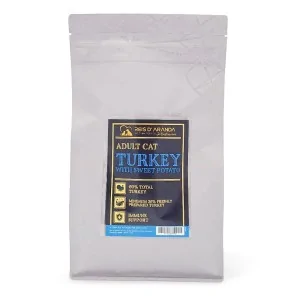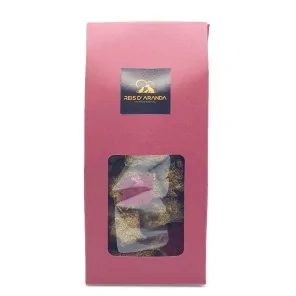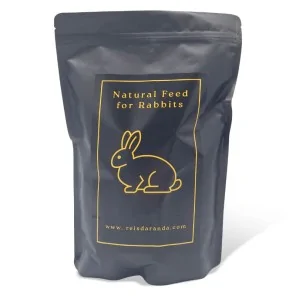Its name says it all: the Vienna blue rabbit comes from Austria. Not only is it beautiful with its shiny blue-grey...
WHICH PLANTS ARE POISONOUS TO PETS?
INTRODUCTION
We all have plants in our homes that bring light and colour to our lives, transport us to exotic places or perfume our homes; but when we have pets it is important that we inform ourselves about which of these plants that we have or can acquire are dangerous for the well-being of our animals. Ignoring this issue and trusting that ‘they won't touch them’ can be very risky, even endangering the lives of our pets.
PLANTS TOXIC TO ANIMALS
Here are some of the plants that are common in our homes and that are toxic or dangerous for our animals:
ALOE VERA: The sap (acíbar) of the plant is toxic (yellowish latex), found just under the skin of the stalks.
Causes irritation of mucous membranes and skin.
Symptoms of poisoning: bubbles on skin and mucous membranes, salivation, vomiting, diarrhoea, abdominal pain, weak pulse, conjunctivitis (in contact with eyes). Do not confuse aloe latex with aloe gel (aloe gel is a medicinal plant commonly used throughout the world).
ANTHURIUM: The whole plant is toxic, irritates mucous membranes.
Symptoms of poisoning: salivation, intense itching of the face, swelling of the face, vomiting and paralysis of the tongue.
AZALEA: The whole plant is toxic, especially the leaf.
They contain grayanotoxins, glycosides that affect the digestive tract, circulatory system and nervous system.
Symptoms of poisoning: prolonged vomiting, arrhythmias, convulsions, ataxia (loss of muscle control during voluntary movements, such as walking or lifting), weakness, depression and death. Poisoning by these plants is rare.
BULBS OF ORNAMENTAL PLANTS (JACINTHUS, NARCISO AND TULIP): The bulbs of some ornamental plants contain substances capable of poisoning animals and humans.
Intoxication is almost always caused by nibbling on bulbs that have not yet been buried or have been dug up as a result of play or curiosity.
The patients are young animals or bored or stressed adults.
Symptoms of poisoning: gastroenteritis (mostly mild to moderate), contact dermatitis.
CODIAEUM VARIEGATUM: The sap of the plant is toxic, irritates mucous membranes and skin.
Symptoms of poisoning: skin blisters and oral mucosa, salivation, vomiting, diarrhoea, weak pulse, abdominal pain, conjunctivitis (in contact with eyes).
ADAM'S WORT: The whole plant is toxic, irritating to mucous membranes.
Symptoms of poisoning: symptoms of salivation, intense itching of the face, swelling of the face, vomiting, paralysis of the tongue.
DIGITALIS PURPUREA: The whole plant is toxic, especially the flowers and fruits, affecting the heart.
Symptoms of poisoning: vomiting, diarrhoea, bradycardia (slow heartbeat) and arrhythmias.
DRACENA: The toxic active compound of these toxic plants is saponin.
Symptoms of poisoning: dilated pupils, vomiting, loss of appetite and increased drooling.
FAMILY ARACEAE: Tropical plants, widely used as indoor ornamentals. Their flowers are grouped in spadixes and protected by a bract called a spathe.
Toxic principles and mechanism of action: They have punctate crystals of calcium oxalate inside cells called idioblasts. When the plant is chewed, the idioblasts are broken and the crystals become embedded in the mucosa, causing irritation and inflammation of the entire oral cavity and gastric erosions-ulcerations.
The whole plant is toxic. Causes irritation of mucous membranes.
Symptoms of poisoning: oral irritation, severe itching, eye irritation, difficulty in swallowing and even breathing in more severe cases. Change in kidney function and neurological changes may occur.
IVEDRA: The whole plant is toxic, producing irritation of mucous membranes.
Symptoms of poisoning: oral irritation, severe itching, eye irritation, difficulty swallowing and breathing in severe cases.
CATNIP: The leaves and stems of this plant induce behavioural changes exclusively in cats, although one third of cats are not affected by this plant.
The inducing substances are essential oils and a monoterpene (nepetalactone) contained in leaves and stems. These substances are absorbed nasally.
Cats repeatedly smell the plant and within a short time show characteristic signs of poisoning: rubbing against the plant, ataxia and falls, persistent rolling around, thialism, consumption of large quantities of the plant; ingestion causes vomiting and diarrhoea, which are self-limiting phenomena.
The signs persist for about one hour; after two hours, the animals become sensitive to the effect of the plant again. No serious cases of catnip poisoning have been reported.
HORTENSIA: The leaves and shoots are the poisonous parts of this plant, and the presence of a cyanogenic glycoside (hydrangine) and of saponins, oils and resins has been described.
Hydrangea poisoning is rarely reported.
Symptoms of poisoning: gastrointestinal, cyanosis (mucous-coloured), convulsions, abdominal pain, muscular flaccidity, lethargy, vomiting and coma.
KALANCHOE / DEVIL'S THORN: The whole plant is toxic, especially the flowers. Its toxicity affects the heart.
Symptoms of poisoning: vomiting, diarrhoea, ataxia, tremors and sudden death.
LILIUM: All parts of the plant are toxic, especially the flowers. The identity of the toxic substance in this plant is not yet known.
The genus Lilium contains numerous species and varieties whose high toxic capacity has only been described in cats, in which it causes acute renal failure.
Only minor, non-life-threatening gastrointestinal problems have been observed in dogs that have consumed significant amounts of the plant.
Symptoms of poisoning: Onset within 3 hours of consumption of the plant, with vomiting, thialism, anorexia and depression.
LILY OF THE VALLEY: This plant, also called lily of the valley, contains saponins with gastrointestinal effects and cardiotoxic glycosides.
However, both types of toxicants are poorly absorbed from the intestinal tract, so the plant does not represent a significant toxicological risk.
Symptoms of poisoning: nausea, vomiting, diarrhoea, colic and tenesmus, followed hours later by cardiovascular signs (hypotension, bradycardia, atrioventricular block of I-III degree, asystole). Other signs include depression, fatigue, confusion, hyperkalemia, hyperhidrosis, tremors. Symptomatolgy occurs 5-24 hours post-ingestion and death can occur between 10 hours and 4 days.
MAMONEIRA: The whole plant is toxic, especially the seeds. Its toxicity causes cell death by blocking protein synthesis.
Symptoms of poisoning: vomiting, diarrhoea, purple mucous membranes (cyanosis), ataxia, convulsions and weakness. Signs of poisoning appear only 3 days after ingestion.
MARIHUANA: The product known as marijuana is a mixture of cut, dried and ground stems, leaves and flowers of Cannabis sativa, whose resin is rich in psychoactive substances (cannabinoids); delta-9-tetrahydrocannabinol (THC) is considered to be the main and most potent cannabinoid.
Dogs and cats naturally reject the consumption of marijuana. Treatment of this intoxication is exclusively symptomatic.
Intoxication usually occurs when the plant is mixed into food offered to them (butter, brownies), or they are forced to consume marijuana cigarettes or inhale the smoke (although the presentation of intoxication in this case is not common). Foreign studies indicate that 95-97% of intoxication cases occur in dogs.
We must not confuse the marijuana plant with cannabis-based veterinary treatments.
Symptoms of intoxication: Cannabinoids are highly lipophilic and their metabolites are rapidly fixed in lipid-rich organs, such as the brain. THC is thought to act on a selective brain receptor for cannabinoids, hence the central nervous system effects caused by this intoxicant. In dogs, these effects usually occur within 30 to 90 minutes after ingestion and can last up to 72 hours. Approximately only one third of patients show digestive symptoms (vomiting, diarrhoea, thialism); in most cases, glassy eyes, mydriasis, severe ataxia, depression or alternating depression and excitation, disorientation, drowsiness, bradycardia, tremor, hypothermia are present.
PHILODENDRON: The whole plant is toxic. May cause irritation of mucous membranes.
Symptoms of poisoning: oral irritation, severe itching, eye irritation, difficulty in swallowing and breathing even in more severe cases. Change in kidney function and neurological changes may occur.
PLUMA FLOWER: The seeds and the pods containing them are the toxic parts of the plant, whose poison is said to be an insufficiently characterised glycoside.
Symptoms of poisoning are gastrointestinal (nausea, vomiting, diarrhoea, colic), generally of medium intensity, and treatment is symptomatic.
SPATIPHYLLUM: The whole plant is toxic, irritating to mucous membranes.
Symptoms of poisoning: oral irritation, severe itching, eye irritation, difficulty in swallowing and breathing even in more severe cases. Change in kidney function and neurological changes may occur.
ZANTEDESCHIA AETHIOPICA: The whole plant is toxic, irritating to mucous membranes.
Symptoms of poisoning: salivation, intense itching of the face, swelling of the face, vomiting, paralysis of the tongue.
LAUREL: It is important to note that laurel (Laurus nobilis) can be toxic to dogs and cats due to the presence of eugenol and other essential oils. These compounds can cause digestive problems in these animals, such as excessive salivation, vomiting, diarrhoea, abdominal pain and obstructions. It is important to make sure that you do not flavour your dog or cat's food with bay leaves and to keep bay leaves out of reach of these animals.
In addition, bay laurel poisoning can be especially dangerous in cats because of their grooming habits and because topical absorption of these toxic compounds is easier. Symptoms of poisoning in cats can include tremors, ataxia, respiratory and liver failure and a drop in body temperature. Interestingly, bay laurel is also toxic to horses.
Symptoms of poisoning can appear as late as several hours or even days after ingestion. Therefore, it is important to be alert and seek veterinary care immediately if you suspect that your pet has consumed this toxic plant.
MISTLE: Mistletoe, the typical Christmas plant, is a plant that contains lectins and foratoxins, which are the main chemicals toxic to furry pets. These substances can affect the hearts of dogs and cats, causing low blood pressure and slower heart rate.
Mistletoe poisoning only occurs if the animal consumes a large amount of mistletoe. Symptoms of poisoning in dogs and cats may include gastrointestinal distress, vomiting, diarrhoea, difficulty breathing and bizarre behaviour. They may also experience weakness due to low blood pressure or slow heart rate. It is important to note that treatment of mistletoe poisoning will depend on how much of the plant the animal has consumed and the severity of the symptoms. In mild cases, only monitoring and observation may be recommended to ensure that symptoms do not worsen. In more severe cases, medication may be necessary to control symptoms and stabilise the animal. In extreme cases, surgery may be necessary to remove the mistletoe from the animal's system.
RASTER FLOWER: It is very common to have a poinsettia at home during the holiday season, but be aware that this plant is toxic to dogs and cats. Therefore, it is important not to have this plant at home if you have pets, or if you do, to make sure it is out of their reach.
Poinsettias contain a milky sap inside that can be very irritating to the mouth and stomach of dogs and cats if ingested. If the animal consumes only a small amount of this plant, symptoms of poisoning may include excessive salivation, vomiting and diarrhoea. If large quantities are consumed, symptoms may be more severe. In addition, poinsettia sap can cause skin and eye irritations if it comes into contact with these sensitive areas.
As with mistletoe, treatment for poisoning will depend on how much of the plant has been ingested by your dog or cat. In mild cases, it will simply be a monitoring of its evolution; in more severe cases, medication will be recommended to stabilise the animal's intoxication symptoms; but in more extreme cases, hospitalisation or surgery will probably be recommended.
DIEFENBAKIA: Diefembaquia is a plant belonging to the Araceae family, which means that it is a relative of the Philodendron plants. Like the Philodendron plants, all parts of the Diefembaquia are toxic to dogs and cats.
The sap of Diefembaquia contains insoluble calcium oxalate crystals that can irritate mucous membranes and cause hypersalivation, hypertrophy of the tongue, ulcers, vomiting and difficulty eating. Ingestion of dihydrambacillus may also cause kidney and respiratory problems. If your dog or cat comes into contact with diefembaquia sap, it can cause inflammation of the cornea and possible temporary blindness.
WHAT SHOULD I DO IF MY PET HAS BEEN POISONED BY A PLANT?
If we suspect that our pet has been poisoned by a plant, it is important that we go quickly to the vet so that it can receive the most appropriate treatment for its case. We should never leave it alone to see if it ‘produces symptoms’ or try to treat it on our own.
PREVENTION FIRST AND FOREMOST
As we have already mentioned, it is important if we have animals and they will have access to plants (indoors or outdoors) that we choose plants that are not harmful to our animals. If this is not possible or if we cannot find ‘safe’ plants, it is essential that we learn to recognise the initial symptoms of poisoning and that we take the necessary measures to prevent our animals from having access to these plants, such as placing them in a closed room (greenhouse) or placing them in places where they cannot bite or touch them.
Leave a comment
Log in to post comments
















